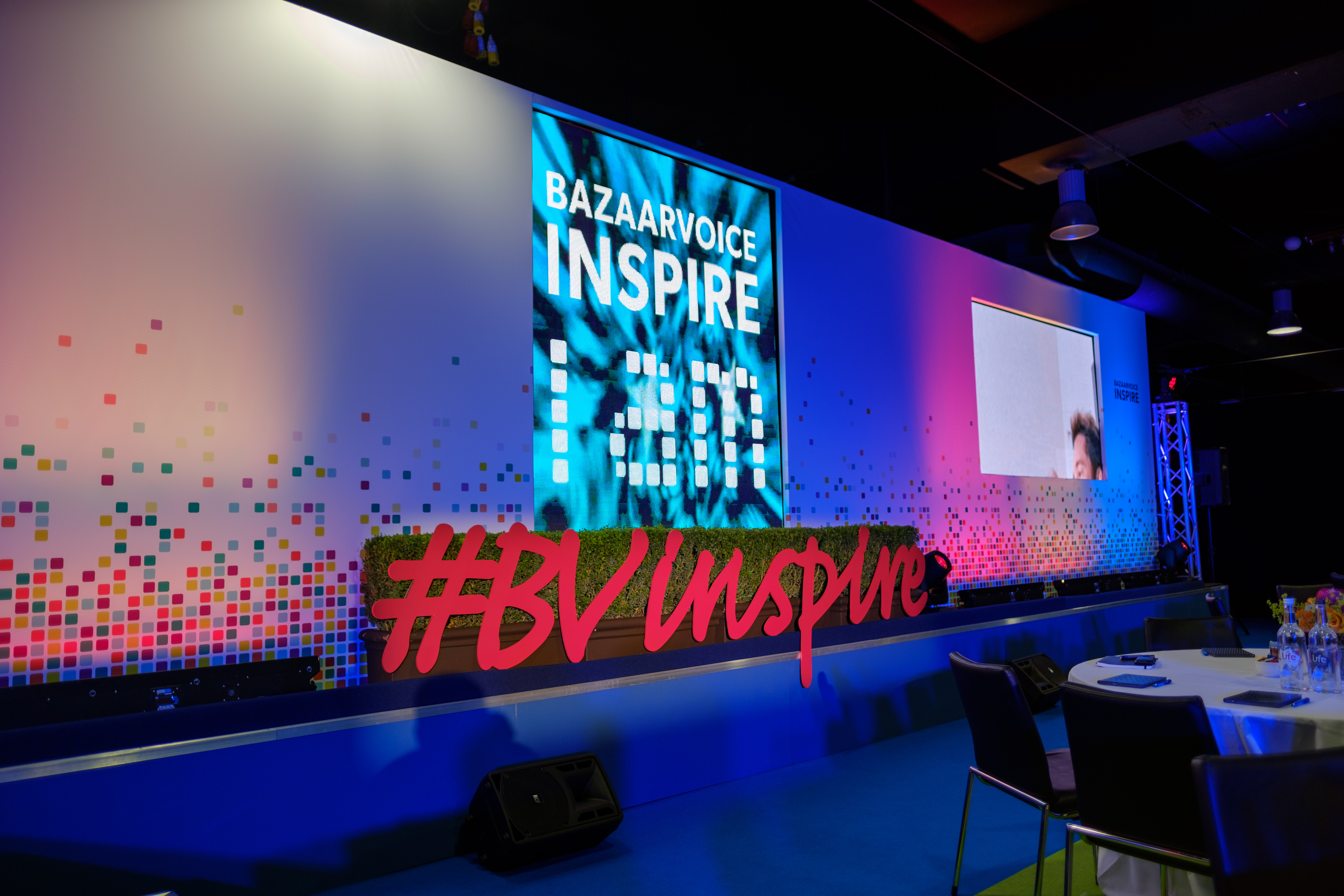June 13, 2017
On Wednesday 7th June, we opened the doors of Chelsea Football Club to welcome nearly 300 of Europe’s leading brands and retailers to our annual Bazaarvoice Inspire: Europe 2017 event.
The day lived up to its name; it was truly inspiring to hear more than 20 industry gurus, from John Lewis to GHD, share their experience using consumer-generated content (CGC) to transform the retail landscape. We hosted trend-spotting panel sessions, dove deep into case studies, and unveiled our exciting product roadmap. Did I mention we also had candy floss, ice cream stands, and an amazing performance by dancing superstars Flawless!
As I recently joined Bazaarvoice and this was my first Inspire, I decided to pull together my top 5 takeaways from the event, along with my favourite Twitter highlights. After all, good food and entertainment aside, the day was about providing value for our clients. (and stay tuned for our video coming very soon!)
1. Don’t fear the negative reviews!
This highlight comes from our first star-studded panel of the day, which included e-Commerce and marketing experts from BSH, GHD, John Lewis, and O2. Consumers are increasingly seeking authenticity, transparency, and trust when it comes to shopping online. They expect to see some negative reviews, we can’t stop this. As Debbie Wilson of Mars Petcare said during a panel put it, “We invest heavily in replying to negative reviews as they are so important to building authenticity.” In fact our own annual benchmark study revealed that shoppers purchased products with slightly lower ratings over products with only a few or no reviews at all. Later in the day, we heard how crucial negative reviews can be for shaping product functionality. From consistent product flaws to suggestions for new product features and options, negative reviews can provide brands and retailers with insight into consumer expectation and experience.
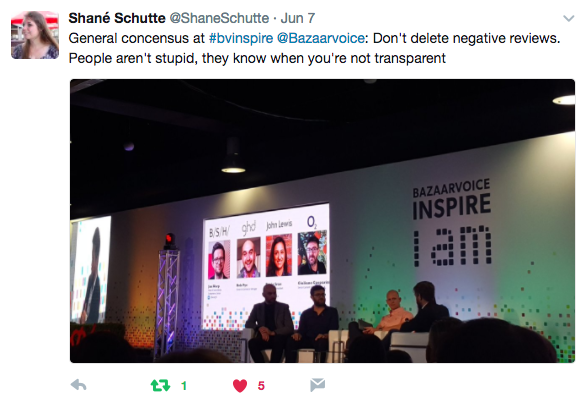
2. CGC may have more of an impact on your business than you think.
During another of the day’s session, Ben McLellan took us deep into the real business benefits his company, retail giant Debenhams, has seen with CGC. When you think of ratings and reviews, you might assume the only goal is conversion, but that is just the tip of the iceberg. While Debenhams does prioritise conversion (they saw an 18% higher conversion rate on products with reviews compared to those without), their CGC strategy has expanded to include visual content and product sampling. After launching Kat Von D, a relatively unknown beauty brand in the UK, through a promotional campaign that included the hashtag #KVDxDebenhams, the retailer discovered that it had over 25,000 Instagram posts tagged with the hashtag within two weeks of launching. These consumer-generated photos, when displayed in an inspiration gallery on the Debenhams site along with links to purchase the pictured products, resulted in an increase in average order value of £2.32 with a projected uplift of £29,000. Beyond review syndication for their brands, Debenhams really focuses on building a community of product advocates. This community then enables them to manage an effective sampling programme, crucial for generating momentum around new product releases. Debenhams’ success tells the full potential of CGC, and having their UX Design Manager at Inspire to walk through the company’s tangible results was even more powerful.
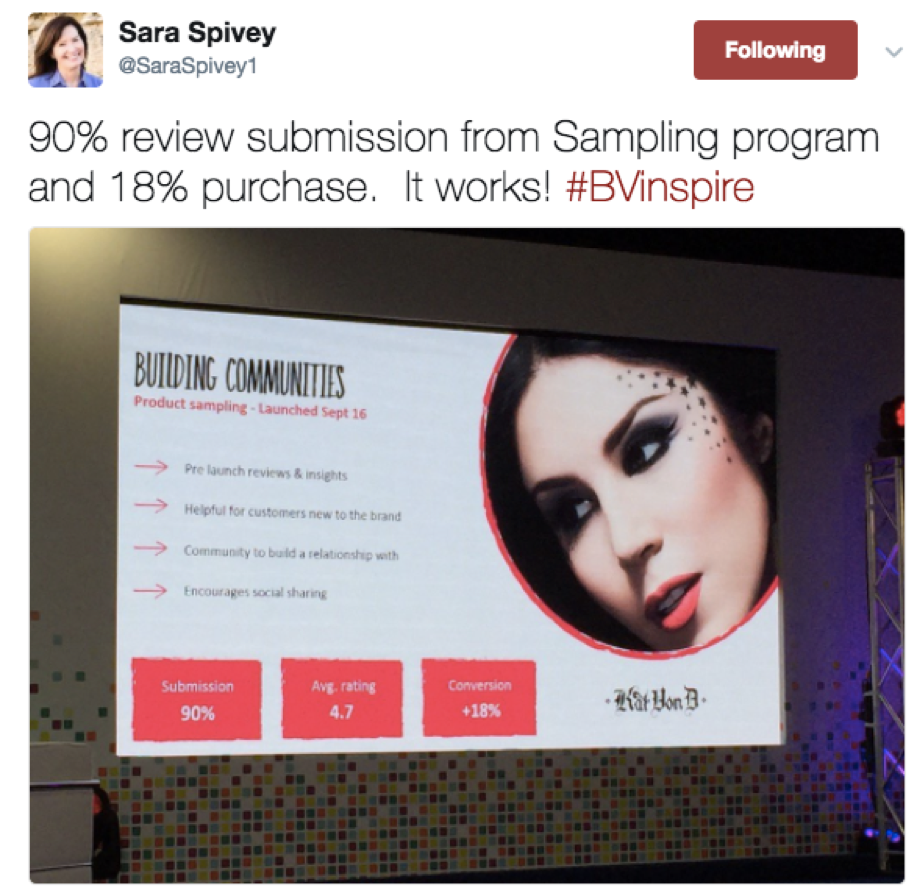
3. Sharing is caring.
Over the course of the day, we heard some fantastic success stories about the relationship between brands and retailers. Valerie Goncalves gave a brilliant deep-dive into how Philips has syndicated their 430,000 reviews to more than 190 different retailers! Such strategy enables brands to amplify their product message to consumers in the most compelling, targeted way. From a retailer perspective, the benefits are huge — more web traffic, higher conversion, greater trust, and a reduction in SEO costs. Joanna Steele of Argos hit the nail on the head when she said: “Brands that we work with know that if they engage with us on CGC, they sell more products.”
 4. We all know a picture is worth a thousand words, but what about a thousand pounds?
4. We all know a picture is worth a thousand words, but what about a thousand pounds?
For me personally, the rise of visual content has been one of the most exciting e-Commerce developments over the past few years, and it seems like I’m not the only one who thinks so. Did you know that there are over 2 billion images shared online every day? The business benefit of leveraging this type of CGC has been well-documented by our clients, as Tom Newbald of Feelunique puts it: “We have tested many different types of content, and visual content from customers has proven to be more engaging and have higher click-through than professional or stock images.” Roxanne Gaillard of Sephora told us about taking the best of the offline world (we’ve all done the lipstick on the hand test in-store) and transforming that into compelling visual content to bring the products to life. An audience member raised a great question during this session — how can brands use visual content to sell something like fragrance? The discussion turned towards creative packaging and other ideas, but everyone agreed — consumer-generated visual content is more effective than stock or branded photos, regardless of product.
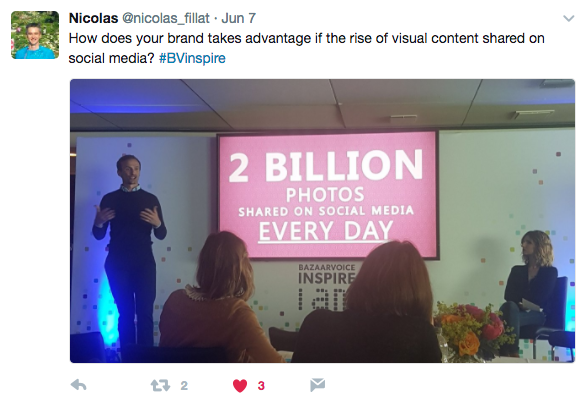
5. Move over Millennials, Gen Z has arrived.
For some reason, everytime I hear the term Gen Z, I think of the Brad Pitt movie World War Z and have a sudden fear that a hoard of Justin Bieber fans will chase me down the street mistaking me for a rare Pokemon. However, as it turns out, there’s much more to this youthful generation than just watching cute kitten videos and documenting avocado toast on Snapchat (although I did learn they spend an average of 4 hours a day on YouTube). They are not only hyper-connected but hyper-anxious. A recent study found that 82% of this age group said they thought carefully about what they post on social media with a further 43% regretting a previous post. They also represent the first generation born into the Expectation Economy, fuelled by 4G and their parents’ Amazon Prime accounts, they expect to receive everything on demand. These consumers are now coming of purchasing-power age, and our clients spoke about their impact on business. Noorin Virani shared how L’Oreal is upskilling their team to meet new digital demands, and Zoe Ashford of Lipsy revealed that they tapped their own Gen Z employees in an effort to decode this unique audience. It feels like we have only just begun to understand the buying power and behaviour of this up-and-coming generation.
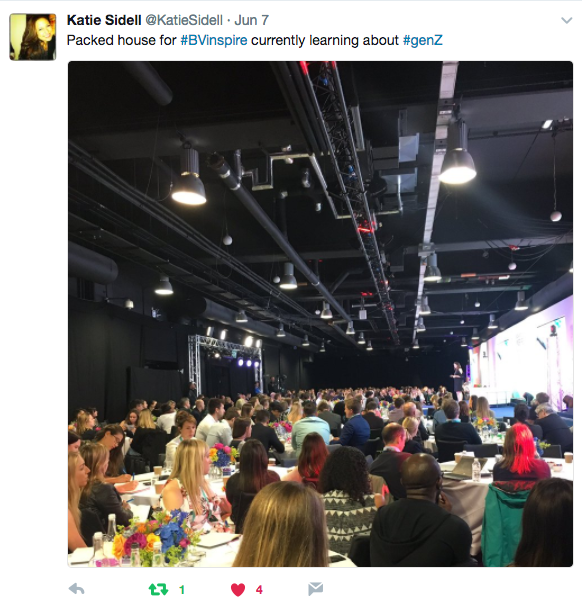
These were just some of the major takeaways from my first Bazaarvoice Inspire event. For the readers who attended, what were yours? On behalf of all of us at Bazaarvoice, I’d like to thank our speakers and attendees for their contribution to a very memorable day. If you’re eager for more inspiration, you can follow the event on Twitter, see when we’re coming to your city next, or contact us for more information on how we can help you take your CGC strategy to the next level.
I’ll close with an apt quote from our Bazaarvoice Inspire: Europe keynote speaker and sporting legend Sir Clive Woodward: “Talent alone is not enough. That is the start, not the finish. The DNA of a champion is made up of many different aspects, and the ability to learn skills – being a sponge rather than a rock – is central to this. Those who have the passion to succeed can reach the top.”
